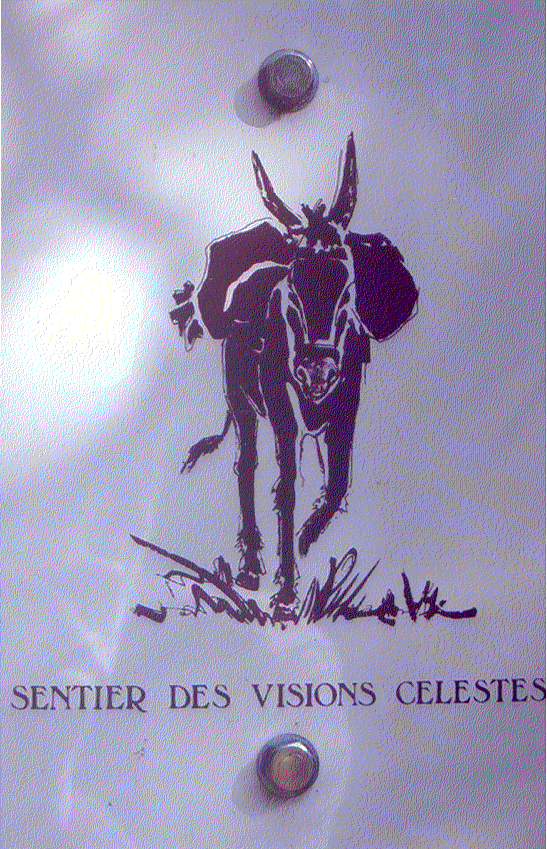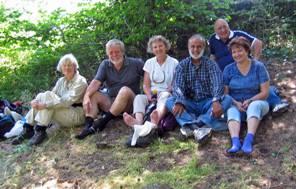
The path of celestial visions
Association of Former WMO Staff, Buletin 3, November 2005.
The path of celestial visions
By Naginder Sehmi
The steep rocky promontory on the left where the Rhone River makes an elbow bend has impressed whoever has entered Valais from Lake Leman side. It marks the entrance to central Valais. It is also the site of a nature reserve: Les Follatères, a protected area with 30 signposts marking out trails crisscrossing it. Benefiting from a modified Mediterranean climate, its wonders consist of over 200 species of southern and oriental vegetation, rare insects, birds and reptiles. Flowers start coming into bloom in February, and reach their climax at the end of spring, to the song of nightingales inter alia.
That was the season that an Amicale group took off early in the morning of Friday 3 June 2005. By 9 am we had parked our cars just downstream of the Rhone bridge at Branson. We approached the waiting yellow Postbus and tried anxiously to delay its departure until our guides, Liliane and Robin, were present. Amazing Anglo-Swiss timing: they leisurely walked in from another bus, and ours rolled off. It had been waiting only for them. The narrow bus route slalomed along the riverbank through green vineyards punctuated by sunlit villages and lush forests. Half an hour later the bus deposited us in the charming little village of Dorénaz situated at the foot of a rocky cliff. We had enough time to enjoy coffee and croissants before the ten o’clock cable car ferried the seven of us 520 metres above the Rhone to the hamlets of Alesse and Champex.
A bright sun in a blue sky and a light morning breeze cooled and honed our spirits, impatient to follow the nature trail of Les Follatères. With his English patience Robin lined us up for a photo against the redtélécabine. Describing the details of a walk can become an uninteresting travel log. However, objects and incidents that remain imprinted in the memory are a joy forever. The trail signposts displayed the image of a gentle wise-looking donkey with the words Voie de la vision céleste (Path of celestial vision).
Walking downhill, most of the time under the shade of deep green mainly conifer woods, salved our cranky knees and ankles. Liliane, our flower expert, was quick to direct our attention to Jupiter (not the celestial body but the flower: Jupiter’s robin in English (Silene flos-jovis)). Sky and earth seemed to merge here. She showed us viper’s bugloss, white cephalanther, wild lettuce and many others that now escape my memory. The image of flowers adorned in innumerable shades of colours varying from van Goghian deep to soothing pastel in a multitude of shapes: stars, bells, loops and strings.
Every break in the woody cover to our right revealed a new stunningly picturesque view of the Rhone valley below, with the bridled river flowing amidst green fields, orchards and vineyards, overlooked opposite by high snow-clad peaks sculptured by deeply cut hanging valleys, some spouting out glittering waterfalls.

Shady stop. L-R: Liliane Perry; David Hume; Margaret Glavin; Naginder Sehmi; Emil Gomez; Nati Hugonnet
Soon after midday we found ourselves on the promontory itself. Perched on it we joyously shared our picnic lunch, appreciating the view of the famous “elbow” of the Rhone stretching for kilometers in both directions, the industrial sector of Martigny being rather a blemish on the paradisiacal image. The forest trees here did not look very healthy; is it because of climate change?
Naginder’s talents uncovered
An article by Naginder Sehmi was published in the Swiss national newspaper Le Temps of 21 September 2005. In it he criticised the way in which aid was generally given by richer to poorer countries, affirming that the emphasis must be on the creation of jobs.
